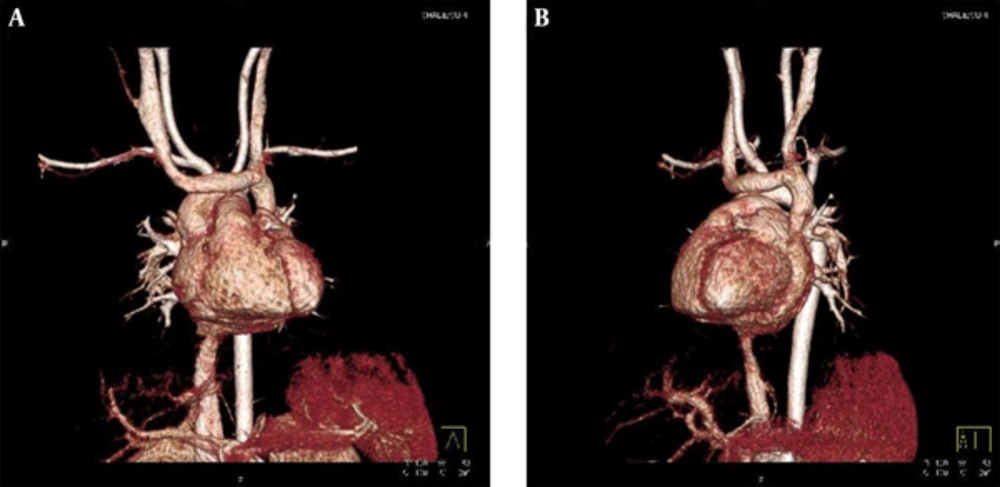Dear Editor,
A persistent left superior vena cava with an absent right superior vena cava is extremely rare and only a few cases have been reported in adults (1-3), while no cases have been reported in neonates or infants. Here, we report a 3-week-old female who was diagnosed with this condition using transthoracic echocardiography and confirmed with thoracic computed tomography (CT) angiogram.
A 3-week-old female underwent transthoracic echocardiography (iE33, Philips medical system, Andover, MA, USA) to evaluate a grade 1 systolic murmur. In the subcostal view, blood flow in the inferior vena cava drained to the right atrium, while no blood flow from the superior vena cava to the right atrium was noted (Figure 1A). In the four-chamber view, no superior vena caval blood flow was seen, but an enlarged coronary sinus drained to the right atrium. Except for a patent foramen ovale, there were no congenital heart defects. In the parasternal long-axis view, a dilated coronary sinus was noted posterior to the left atrium (Figure 1B) and the suprasternal view showed a persistent left superior vena cava with a right innominate vein draining toward the left superior vena cava and an absent right superior vena cava (Figure 1C). The baby girl was diagnosed with a persistent left superior vena cava with an absent right superior vena cava. Since there was no obvious problem with venous blood draining to the right atrium, her parents were reassured. Six months later, thoracic CT (somatome definition flash, Siemens healthcare, Forchheim, Germany) angiogram was performed to confirm the diagnosis and find any unrevealed anomalies. CT confirmed absence of the right superior vena cava and the right jugular and subclavian veins drained to the left superior vena cava through the innominate vein (Figure 2). The left superior vena cava drained to the right atrium through the dilated coronary sinus with no stenosis. The baby girl did not undergo any medical or surgical procedure to correct this anomaly and she is healthy during 2 years of follow up period.
A, The subcostal view shows no right superior vena cava blood flow draining to the right atrium (arrow); B, In the parasternal long axis view, an enlarged coronary sinus is seen; C, In the suprasternal view, the left superior vena cava and innominate vein are seen. AO, aorta; CS, coronary sinus; Inn V, innominate vein; LA, left atrium; LV, left ventricle.
Although a persistent left superior vena cava with a right superior vena cava is relatively common, a persistent left superior vena cava without a right superior vena cava is extremely rare. A persistent left superior vena cava with an absent right superior vena cava is generally asymptomatic, but has clinical implications. It is associated with an increased incidence of arrhythmias and conduction disturbance (4), and also has high incidence of accompanying congenital heart disease (5). Careful management is needed while inserting central venous catheter (2), cannulating in open-heart surgery (6), and also while performing electrophysiological studies and pacemaker implantation at any age (3).
In neonates and infants, the subcostal and suprasternal views of echocardiography with CT images give much information on the venous anatomy which should not miss the important diagnosis. By knowing important clinical implication, future risks for patients can be expected.

